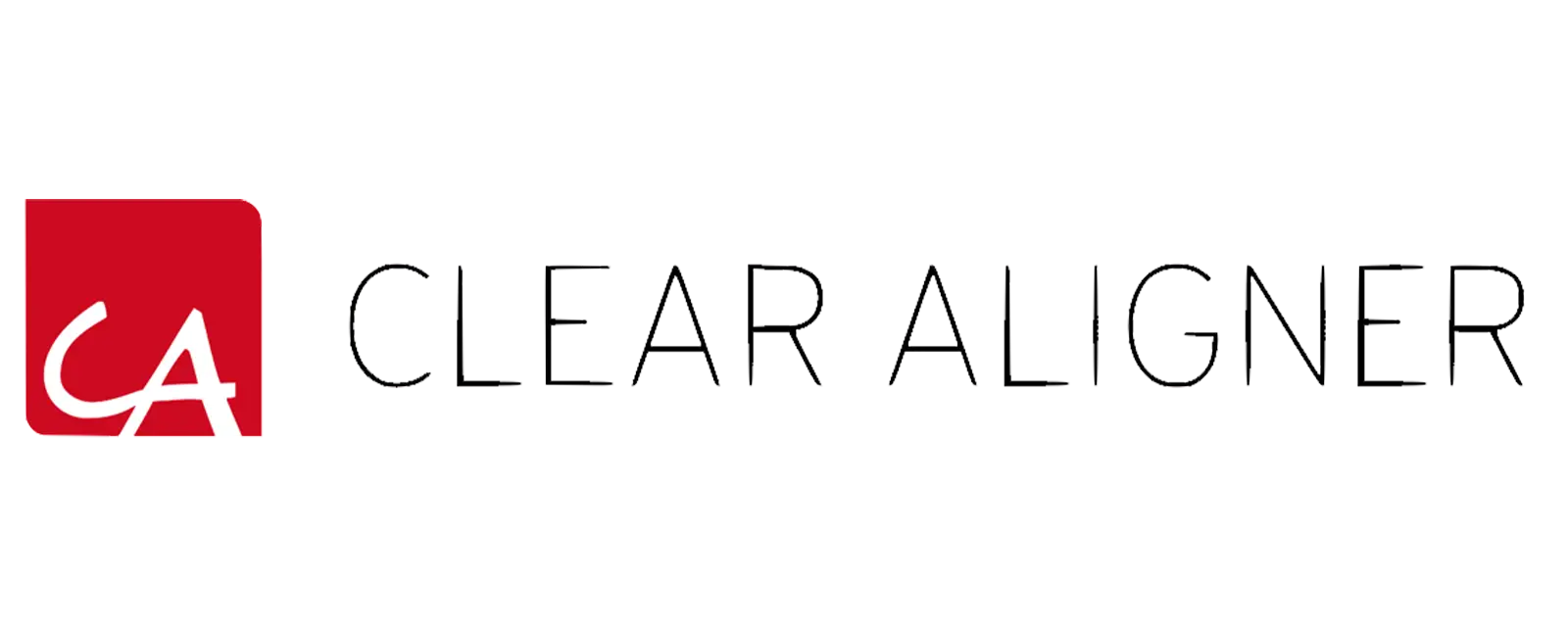An anaesthetic will be used to numb the area during the treatment process, so you will not feel anything as your dentist works to prepare your teeth to accommodate a bridge. You may feel some discomfort as the anaesthetic wears off, though this can be controlled with over-the-counter painkillers.

Isabella Jeggo
11:49 06 Mar 25
I have just come to the end of my Invisalign journey at Ascot Dental Suite, and I couldn’t be happier with the outcome.Dr Laura, and the team are really lovely and I found that they were very helpful with any questions I had throughout the process. The service you receive there is great from start to finish.
Annette May
17:10 26 Feb 25
I recently had composite bonding done at Ascot Dental Suite, and I couldn’t be happier with the results - I cried with happiness!Dr Adam is truly a perfectionist - his attention to detail and expertise made the entire process smooth and stress free. He took the time to explain everything and ensured my teeth looked natural and flawless.The reception team, Dannii and Lucy, were absolutely amazing! From the moment I walked in, they made me feel so welcome and at ease. Their friendly and professional approach made the experience even better.The whole team at Ascot Dental Suite are outstanding - professional, caring and committed to providing top-tier dental care. I am beyond thrilled with my new smile and highly recommend them to anyone considering composite bonding or any other dental treatment. Thank you all so much x
Kerry Traves
13:24 19 Feb 25
I had dr Seymour and had 6 top teeth composite bonding, he was very professional , made sure. I was comfortable and happy during the whole appointment and got me involved in the process to make sure I was happy with the size , shape and colour of my teeth. Very happy with them would recommend !
Collett Properties
10:33 17 Feb 25
I had an amazing experience at Ascot Dental Suite, where I had teeth whitening and 4 composite bonding with Dr. Dailson. He was incredibly skilled and a true perfectionist, ensuring every detail was just right. The results have been fantastic—I haven’t stopped smiling since my appointment! Highly recommend.
massimo giamattei
18:40 11 Feb 25
Amazing from start to finish. Danielle and Lucy welcoming me and talking me through everything and then having Dailson doing my treatment for my composite bonding. Couldn't have come to a better place, have already started recommending to my friends and family looking to get their teeth done. Such a lovely group and I can't wait to come back. Thank you all !!
Rusty Pro
12:33 26 Jan 25
Exceptional Care and Life-Changing Results I first noticed the Ascot Dental Suite through adverts on my socials, and something about it felt right. From my very first call with Dannii to my initial visit speaking with Lucy and Dr. Mohammed Sayal (Mo), the entire journey was seamless.There was an ease to my clinic visits that I had never experienced before. Going to the dentist became something I genuinely looked forward to—a testament to Dr. Mo and nurse Jen, who made me feel completely at ease while keeping me informed every step of the way. A big thank you also to Dannii and Lucy for their incredible support with information and appointments.Not only do I now have the confidence to smile again, but my teeth are properly aligned, allowing me to enjoy eating without risking further damage to my existing teeth.The entire experience from start to finish was amazing, and I can wholeheartedly recommend Ascot Dental Suite to anyone. Thank you to the entire team for transforming my smile!Rusty Pro
Chantal Raith-Riches
11:14 16 Jan 25
Absolutely Delighted with My New Smile!I cannot thank Mo and the team at Ascot Dental Suite enough for giving me the perfect smile! After getting 4 porcelain crowns and 4 composite bonding on my top teeth, I feel like a brand-new person.From start to finish, the entire journey was seamless. The team is truly incredible—professional, friendly, and so attentive to every detail. They explained each step of the process clearly, ensuring I was comfortable throughout. The results have exceeded my expectations; my smile looks natural, flawless, and better than I could have imagined.If you’re looking for exceptional dental care and transformative results, I wholeheartedly recommend ascot dental suite! Thank you for giving me a smile I can’t stop showing off!
Janelle Charles
18:24 19 Dec 24
I contacted Ascot Dental Suites after speaking with another dental surgery about my needs, who couldn't help - Ascot, however, were impeccable! Fast service, wonderful staff, and great work. The receptionists are an absolute credit to the business and make you feel comfortable right away. I wouldn't go anywhere else. Thanks, Ascot Dental Suite 💫 I'll be recommending you to everyone I know.
Carmen Bruno
13:40 17 Dec 24
I saw the advert for Ascot Dental Suite on Facebook. I made an enquiry and Dannii was in touch the same day. I found Danni really helpful as I was new to cosmetic dentistry. I was booked in for a consultation with DR Kamila within a few days and she explained the process and recommended what would be the best plan to achieve the smile I wanted - even gave me an physical example on my own teeth of what they would look like - I was very impressed. Lucy the practice Manager who is great, went through my Dental plan and costings for the Phillip Zoom in office whitening and composite bonding on my front 4 teeth. It was all very professional and in an environment where I felt very comfortable.The actual work I had done with DR Kamila went so well, I was very well looked after by all the staff. The result was fantastic and the aftercare second to none. If you are thinking of getting this done I highly recommend this practice. It has changed my life. Thank you so much to all involved in my journey. I will be recommending you everytime I get a compliment! :-)
jess gibb
16:22 12 Dec 24
I went to ascot dental suite today & had an amazing experience. I’ve been unsure as to whether I’ve needed composite bonding & have always just wanted a whiter / slightly neater looking smile. Laura the dentist discussed my options with me & was very complimentary about my teeth. She discussed different options with me & took into account what would suit me best. She agreed it was best to start with whitening & reassess when that is finished as to whether I would like anything else done (composite / Invisalign). I appreciated that she didn’t encourage me to completely change my smile / spend lots of money as I do already have very straight teeth. Excited for my whitening journey at ascot dental suite :) couldn’t recommend this place anymore! X
Georgia White
12:02 12 Dec 24
A smile and confidence transformation by Dr Kamila and the team. After 4 months of invisalign I had bonding on top 4 teeth. Lucy and Danni were helpful throughout the whole process and Kamila just executed the job perfectly. Life changing, thank you to all at Ascot Dental Suite.
Sandra Hanson
18:47 03 Dec 24
Kamila is an artist! Truly amazed by her exceptional skills. She explained everything step by step in great detail and really listened to what and how I wanted my smile to look like. I can’t recommend her enough and the whole ascot dental team!
Woodford 13
11:58 21 Nov 24
Dr Monterio did an amazing job I have always suffered with dental embarrassment from having a big gap at the front.A dentist with a great relaxed friendly atmosphere with great music!Along with Lucy and Jenny have made my experience to showing my teeth in photos absolutely amazing!
Tobias Bleu
17:13 12 Nov 24
If your looking for composite bonding you have to go to @ascotdentalsuite I have just had mine done and I didn't even know composite bonding could look this good and real. @dentistkamila did such an amazing job and far surpassed my expectations.The whole process was done in a few hours, no pain, no sensitivity, so much cheaper than veneers and no damage to my teeth underneath.There's so many scam companies about on Instagram that offer composite bonding and I was looking for a long time to find the right place to get it done. It's stressful trying to find the right clinic and I'm so glad I went to Ascot dental. Go check out there insta if you want to freshen up your smile it's so easy and it will be one of the best things you've done 😁🙌
Jenna Wright
16:47 06 Nov 24
Loved my experience with Mohammed. He talks you through everything in great detail and is very reassuring throughout the process. Letting him perfect my teeth has been the best thing I have done to this day and I highly recommend him!
Stevo Murphy
13:20 18 Oct 24
Well what can I say?!?! Dr Laura Hicks has made me able to smile again. I have always been conscious of my teeth and smile at an early age, but Laura at the start put me right at ease throughout my process and I am sure she will beyond. Words can’t explain how thankful I am of her and the team! Thank you and see you soon!!
Renata U
20:47 14 Oct 24
We had an emergency situation, and my husband was seen very quickly. The receptionist was incredibly kind and helpful, and the team that treated my husband was fantastic. We will definitely be returning in the future, the whole staff is wonderful!
Francesca Dalton
09:14 08 Oct 24
I have had invisalign treatment with Kamila at Ascot Dental Suite. My experience was excellent. The team always called before each appointment to confirm it and I am so pleased with my results.
Laura Bell
10:21 04 Oct 24
Amazing experience from start to finish with Laura. I came to Laura as I wanted some advice on widening my smile whilst maintaining a natural look and she recommended invisalign and composite bonding on my 2 front teeth. The results are natural, subtle and exactly what I wanted. Communication with the reception team is also so easy and I’d 100% recommend the team at Ascot Dental Suite!
Ayesha Shah
11:06 01 Oct 24
I decided to have my invisialign treatment with Ascot dental suite, doctor Kamila has been Amazing, very knowledgeable and welcoming as well as all the staff. Highly recommend Ascot dental suite, very happy with the service and treatment.
Lucie M
16:58 26 Sep 24
I’m soooo happy with Dr. Kamila and her team! I had composite bonding done almost 2 years ago, and the results are amazing. It looks so natural, and she really took the time to make sure everything was perfect.Everyone at the practice is so kind and welcoming especially Danielle. The only downside is that it’s a bit far from central London, but it’s totally worth the trip. I’ve even been traveling from France just to see Dr Kamila, that’s how much I trust her work. If you’re looking for a dentist who does an incredible job, I can’t recommend Dr. Kamila enough!
Miryam
15:15 19 Sep 24
I have had a couple of treatments with Dr Nikki and I am so happy, she is very professional, knowledgeable and friendly. Also, Danielle has an excellent costumer service; she always replies to emails or calls and even follow up on enquiries. Because it is a small practice everything seems very familiar so I higly recommend it to every body. They take care of you
Arti Babber
11:15 12 Sep 24
I had an amazing experience at Ascot Dental Suite. The staff were extremely helpful, and Dr. Laura truly made me feel at ease. As someone who tends to be quite nervous, she took the time to answer all my questions and made sure I felt comfortable throughout the whole process. I highly recommend this practice for anyone looking for a professional and caring dental experience.
Kyle Tovey
15:23 06 Sep 24
WOW what an amazing service from Ascot Dental Suite. The very best of general and aesthetic dental treatment.From the outset the communication has been flawless and the team have been so accommodating. I had my general dentistry with the wonderful Laura and Jen and it couldn't have been a more relaxed and comfortable experience they were so lovely and did an amazing job. My composite bonding was completed by Kim whose work is out of this world and attention to detail is outstanding. She was really considerate of what I wanted and gave brilliant advice. My smile is healthier and prettier and I couldn't be happier!!!!!!!!! can't recommend the whole team here enough.As well as the above I had whitening and a hygiene clean and those services too were exceptional. Thank you so much!!!!
Ashlee McCartney
09:30 14 Aug 24
I came to see doctor kamilla because I wasn’t happy with my smile. She was so lovely from beginning to end. From her recommendation I did 4 months of Invisalign followed by composite bonding and I am so happy with the results. I trusted her completely and it paid off. The whole team at ascot dental suite looked after me so well. I can’t recommend enough.
jasmine beard
16:55 13 Aug 24
Absolutely amazing salon! Highly recommend. Such a friendly and professional team. Massive thank you to Dr Dailson for my transformation with composite bonding. Can’t wait for my review session!
Emilija Fedorovic
16:52 24 Jul 24
So inlove with my new teeth! Kamila is a star! 🤩 Also the whole journey from start to finish was so easy and pleasant! Thank you so much Danielle Lucy for your excellent service! Highly recommend and will be back for more soon!
Lewis Field
09:30 23 Jul 24
After reviewing options locally and in London I’m so glad I choose ascot dental suite and can’t recommend Dr Kamila enough. kamila and her team were amazing and I had Invisalign which transformed my smile in 12 weeks.
Lucy Gallimore
06:42 19 Jul 24
Fantastic journey from start to finish with Ascot Dental Suite. Went for composite bonding with Dr Dailson and love the finished look. He has given me a great smile makeover! The whole team are warm and welcoming every time I go. Couldn't recommend ascot Dental Suite enough. 💖
Mike Smurthwaite
13:45 11 Jul 24
No one ever likes having their teeth checked etc but as we need to then go to a nice company. Been at Ascot Dental for a few years now and everyone is so helpful & friendly. Premises are first class and parking has never been an issue so gets a thumbs up from me 👍
Zoe Tegg-Seymour
09:36 10 Jul 24
Ascot dental suite have been wonderful from start to finish making me feel at ease as soon as you enter the clinic. I had Invisalign and at home whitening treatment so pleased with the results they really listen to what smile you like to achieve giving you plenty of options that’s right for you would highly recommend to anyone.
Verite Warriss
14:39 09 Jul 24
Balanced educated trustworthy with transformation now a reality. Ascot Dental Suite - Dailson + Kamila + Lucy … a top team excellent service proving dental health and long lasting smiles to be proud of. Halfway through Invisalign and Bonding engagement. Excellent & highly recommend.
Laura Woodward
12:11 08 Jul 24
Amazing experience from start to finish. I have left ascot dental suite today feeling very happy. My teeth look unreal. Everyone is so friendly and my dentist dr Dailson was wonderful. Thankyou everyone at ascot dental suite xx
Nitin M
22:40 26 Jun 24
I had a fantastic first experience with scaling and polishing at Ascot Dental Suite. The team was welcoming and made me feel at ease right from the start. Parneet was very gentle and took the time to explain each part of the process. The treatment went smoothly and my teeth feel incredibly clean now! I highly recommend Ascot Dental Suite for professional dental care.
Mich Snell
06:52 29 May 24
Service and support has been amazing with Ascot Dental Suite. Kamilla and Lucy have been fantastic at helping me with all of my queries. Coming to the end of my Invisalign now but their professionalism and advice in a non-selling way has been exceptional. Thank you Team for getting me through this and helping me stick with it! X
Luke Embleton
16:51 21 May 24
The best of the best!The whole process from start to finish was made so easy by all involved, shout out my boy Dailson he’s the man if you want your teeth looking 10/10The whole team at Ascot Dental Suite are amazing they make you feel so welcome like part of the family, couldn’t recommend them all enough & special shoutouts to my girl Lucy!
Rosie Desborough
18:50 18 Apr 24
All very welcoming and kind staff. Laura gave me all the options in detail and even gave me an idea in the consultation what the result would look like! I had one tooth I wanted to fix and whiten my teeth which were a good price compared to other dentists I have spoken to. The service I received was exceptional. Laura spent over an hour and a half of her time perfecting one tooth to make sure I was happy. Not many dentists would do that.Thank you all :)
Laura N
20:09 08 Apr 24
I had a crooked tooth, which I wanted to fix without braces. “Mo” fitted me a perfect bridge, the colour is a good match nobody can tell it isn’t my own tooth. The extraction was painless and the whole process didn’t cause any issue in my mouth/eating. You know when you are dealing with professionals. Highly recommend! 🦷🏆
Megan Lloyd-Jenkins
09:51 31 Mar 24
Went to this dentist for the first time, and it was great. Laura really made me feel at ease and explained everything in a way that was super easy to understand. Definitely going back there – would totally recommend this place to anyone looking for a great dental experience!
ollie jenkins
13:02 20 Mar 24
Ascot Dental have been fantastic from start to end.Lucy was great with running me through my first process of getting bonding done.Kamila was excellent and made me feel very relaxed through the process.Since I have had my bonding I have had so many comments from friends and family how lovely my smile looks.Recently I have started my Invisalign journey with ascot dental and can’t wait to have my perfect smile.
Macy Beattie
15:55 18 Mar 24
First time visiting Ascot dental suite and I’m so happy! Dailson And his assistant made me feel very comfortable as the dentist is definitely not my favourite thing! After a hygienist appointment, airflow and a polish my teeth feel amazing!Definitely my new dentist!Thank you!:))
Denise Portman
10:48 18 Mar 24
I had the best experience with ascot dental!! Dr Dalison was amazing, he’s transformed my smile and I couldn’t be more grateful! From start to finish the process has been so easy and everyone has been so lovely and are happy to help with any concerns you may have! I’m am so happy with my new teeth! 100% recommended to anyone looking to upgrade there smile! Thankyou so much to the team at ascot for making this transition so seamless!
Max Stone
21:04 29 Feb 24
Great practice 100% recommend. I was most pleasantly surprised by the speed of service from start to finish in just a month for composite and whitening! Without forgetting to mention all the welcoming staff working hard to make you feel comfortable!
Fiona Zeneli
16:32 26 Feb 24
Composite bonding truly exceeded all of my expectations, providing an unparalleled experience from start to finish. From the moment I stepped into the clinic, I was greeted by a warm and welcoming staff who guided me through the entire process with professionalism and expertise.During the initial consultation, Kamila took the time to listen to my concerns and desires, thoroughly explaining the procedure and what to expect. Her attention to detail and personalised approach immediately put me at ease, instilling confidence in her abilities.The procedure itself was nothing short of amazing. Despite any initial apprehension, the process was remarkably painless and surprisingly quick. Kamila skillfully sculpted and shaped the composite material to achieve the perfect look, all while ensuring my comfort throughout.The results were absolutely breathtaking. My smile was transformed before my eyes, with the composite bonding seamlessly blending in with my natural teeth. The improvement was not only aesthetically pleasing but also boosted my confidence and self-esteem.I cannot speak highly enough of composite bonding and the incredible team that made it all possible. Their dedication to excellence and commitment to patient satisfaction truly set them apart. it's an experience you won't regret.
Roni Brown
10:22 23 Feb 24
Love this place! Not only is it stunning inside but this is a dentist that truly cares about their patients and takes the time to explain every procedure thoroughly. From the moment you walk in you are welcomed with smiles and all staff are happy and enthusiastic to answer any questions with their detailed knowledge. Thank you Ascot dental suite for always making me feel at ease. I am so so pleased with the results and will continue to recommend you to all my friends and family.
Vanessa Selzer
18:12 06 Feb 24
I am so pleased with this dental surgery the nurse and the receptionist are so nice and friendly, the dentist is kind, funny, considerate and set me at ease, I also had the best filling that I have ever had, no pain what so ever and literally moulded to the shape of all my other teeth, you would never know it was a filling, and it was a whooper of a filling, hit and miss that it would be a root canal or extraction, Hats of to all the staff at this place. Thank you!. If you are a nervous patient, don't be! All good here!
Jason Callander
16:50 23 Dec 23
Everyone was very friendly and welcoming. I hadn't been to the Ascot Dental Suite before but needed to make an emergency appointment to get something looked at. Laura Hicks examined my teeth and gums thoroughly and put my mind at rest. I will be booking a dental hygiene session early in the New Year.
Lucy Gallimore
15:22 23 Dec 23
Had the best experience with ascot dental suite. From the moment I walked in there everyone was so lovely friendly and professional. I had a really good check up before having composite bonding on top teeth. Dr Dailson Motererio was amazing ! A perfectionist at what he does. Takes time to make sure it's all right.Thank you so much for giving me a lovely smile and teeth.🥰🥰
Roger Hounsome
13:48 18 Dec 23
A great experience. This is a modern dentist with all the latest technology, compared to my previous dentist it’s like suddenly being in the 21st century. Every visit is a pleasure the staff are so friendly and efficient. I encourage everyone to come to this dentist in North Ascot for a wonderful service. 5 *****
Samantha Abramczyk
16:50 05 Dec 23
Had my composite bonding done with dentist Kamila at Ascot Dental Suite and I couldn't be happier! I had my front 4 teeth done, the procedure was a lot less uncomfortable than I thought it would be. My teeth were straight but chipped and short, which I wasn't happy with. We spoke about what I wanted to achieve at the initial consultation, after which we booked in for a clean and then the bonding appointment. The whole team has been super friendly and helpful at every point, not making you feel pressured, awkward or putting you in a difficult position. The finance application process was also very quick and easy, with Lucy assisting me along the way. I am now super happy with my smile and gained a massive amount of confidence! Thank you Kamila and the team, see you again in a few months! :)
hamza s
16:32 28 Nov 23
I had an exceptional experience at Ascot Dental Suite . The team provided outstanding care, ensuring my smile was perfect for my wedding day. The attention to detail, professionalism, and friendly atmosphere made my dental journey memorable. Thank you for contributing to my special day with your excellent service!"
Alex Hare
10:18 24 Oct 23
So pleased with how my teeth have turned out. Kamila is great at what she does. Offered good advice on want to do to and how to get a neat and bright smile for a decent price
Jennifer Brown
13:04 02 Oct 23
I have been working with Ascot dental suite for 6 months now, they are such a lovely team to work with very dedicated to their jobs and love seeing people leave happy with their new smile. I have also started my whitening treatment so I cannot wait to see the results. 😊
Kiaya Carter-Brace
21:24 01 Oct 23
28/09/23 I took my daughter who has a diagnosis of ASD, SPD and S&L to Ascot Dental Suite. I could not have asked for a lovelier experience. The receptionists were so friendly and patient with Lylalou. Then when we entered the examination room the Dentist and her assistant took time to talk directly to my daughter and explain the function and purpose of every tool. They used encouraging language but kept things simple for her understanding. They removed one of Lylalous (7 y/o) wobbly baby teeth then gave the others a good clean. We both left feeling so happy. Lylalou was so proud of herself and I truly believe that the staff made all the difference. They were all incredibly kind. Thank you again for making an ASD parent feel so comfortable and for treating Lylalou with such empathy 🙏🏼🤍
Kelly Brown
15:11 27 Sep 23
I have been working at Ascot Dental Suite for a while now and it has to be one of the best jobs I have worked in. Everyone is so lovely and welcoming to not only each other but anyone that comes through the door or calls. We always try to give the best experience to our members and the smiles after coming to Ascot Dental Suite is proof of that.The communication and team work between staff is absolutely fantastic and I look forward to the Ascot teams continued growth and success.
Rhi Nicole
10:35 17 Jul 23
I use Ascot Dental Suite for my Invisalign and I’ve had nothing but a great experience for the last 7 months with Mo & his team. As a dentist Mo is fantastic and understands what your desired goal is and Lucy is the best support member they could have! She’s always so welcoming & makes you feel comfortable. I’d recommend them 100% to everyone!
Bethany Cox
10:45 11 Jul 23
I have just finished my Invisalign journey with Ascot Dental Suite and am so happy with the result. Kamila is perfectly lovely, friendly and a true professional. Going to the dentist is not always the most comfortable experience, but Kamila and her team made the whole process so easy! I thoroughly recommend.
Candice Jenner
06:00 27 Jun 23
I had Composite Bonding done yesterday and I am absolutely thrilled with the results.Kamila is just amazing and has given me back my confidence to smile again! Every step was explained from the consultation to the procedure. She truly is so welcoming and makes you feel so at ease as I am a nervous patient at the dentist!Lucy was so lovely too and no questions were ever too much trouble! I can't recommend Ascot Dental Suites enough. Thank you so much to the team.
Ella Wilkins
16:00 21 Jun 23
I cannot recommend Ascot Dental Suite enough. My whole experience was amazing, the staff are incredibly attentive & lovely, Dr Kamila made me feel so at ease and knew what what i wanted and my results were exactly that. I genuinely couldn’t fault them. Wherever i go i get so many compliments on my teeth and my smile, I wasn’t sure if i wanted to get composite edge bonding but i am so glad i did it - they look amazing and super natural. So happy i went to Ascot Dental Suite! 😊
Stevie Bald
12:44 21 Jun 23
I wanted to get my teeth sorted since my twenties, and I’m now approaching 50. I decided to take the plunge and started Invisalign at Ascot Dental Suite. This was such an easy process and I decided to have composite bonding at the end to round off my front 2 teeth. I honestly cannot recommend this practice enough as they look so natural. The staff are so fantastic, I wish I’d done this years ago….. I literally can’t stop smiling!!
Viorica Caraman
13:37 13 Jun 23
I had a great experience working in Ascot Dental Suite as a dental nurse. Amazing dentists, high standards and quality of care.Lovely Practice and staff will treat you with dignity and respect all the time. Thanks for giving me the opportunity to work with you and I hope to see you again in the future 💐
helen abdel jabbar
17:49 05 Jun 23
I had an absolutely fantastic experience at Ascot Dental Suite! The staff was incredibly friendly and went above and beyond to exceed my expectations. Besides the fact that you feel like you’re at a spa, the level of service I received was exceptional!! I have already recommended this practice to my friends and family, who have also had positive experiences. Ascot Dental Suite and Dr. Kamilla you’re amazing, thank you!
Tyme Agency
17:43 05 Jun 23
Brilliant clinic, staff is very inviting and make it their number 1 priority to ensure all patients are comfortable, especially nervous patients. The calibre of results produced is next to none. Beautiful, natural smile transformations is what you get at Ascot Dental Suite!Highly recommend 🦷✅
Sara Warren
21:41 15 Apr 23
Super service and really professional Dental service. I had multiple appointments with dentists to get my perfect smile! After my consultation with Ascot Dental Suite I booked my treatments as really professional and great staff who listen to what you want and reasonable price. Really happy and can’t Recommend enough! Thank you.
Harmony White
20:33 15 Apr 23
I would 100% recommend ascot dental suite. The practice is very well presented n all the staff are lovely. I usually hate going to the dentist but they make you feel so at ease n you always come away with amazing results!
Marie Franquet
10:18 28 Mar 23
Me and my husband have just started our journey with Invisalign. Lucy and Emma are friendly and will put you at ease every time. They also shared their positive experiences with their Invisalign treatments which is very reassuring!Dr Kamila is brilliant, friendly and you will definitely feel in good hands with her.We can’t wait to see the result at the end of our treatment!
Steve Gardener
07:14 15 Mar 23
It's not always a comfortable situation having some dental improvements carried out.But it makes so much difference when you walk into a very clean comfortable calm inviroment likeAscot Dental Suite.It also gives you good confidence knowing that your dental improvements are being carried out by highly confident professionals.Rita & Kamila were the two professionals who carried out the dental improvements that were needed & I am internally grateful to them & all of the very kind & helpful Dental Suite staff who made my dental improvements flow as comfortable as possible!I thoroughly recommendAscot Dental Suite to anyone who is thinking of dental improvements.I am extremely happy with all the fantastic improvements thatAscot Dental SuiteHave made.A very happy!Mr S J Gardener.
lynn beecroft
15:48 31 Jan 23
So pleased I have found this friendly and helpful dentist. I used to have a real fear but everyone here was so welcoming and calming. I am now very happy to smile without worrying what my teeth will look like. Thank you to the whole team.
Becky
16:45 30 Jan 23
Had my composite bonding treatment with Doctor Kamila, she is amazing. I am so pleased with my results! All the staff are so friendly and professional. Brilliant service from start to end.
Katarina Homindova
18:07 25 Dec 22
I had an amazing experience with Invisaline at Ascot Dental Suite. They had offered a free consultation which was following by several sets of invisaline included in the initial price until I was completely satisfied with the results. Dr Kamila is an expert in cosmetic dentistry and I would definitely recommend her.
Kathryn Cox
19:27 21 Dec 22
Ascot Dental suite are doing 2 implants for me (and 1 extraction) I’m a slightly nervous patient when it comes to dental stuff but they have been fabulous! Very caring & supportive. All the staff are friendly & welcoming, Lucy the manager is very much front of house & accessible. Dr Mo is gentle & patient. The aftercare has been wonderful, even checking up on me later in the day after the main & most invasive part of my treatment. Very happy to recommend.
CLARE TRITSCHLER
15:15 02 Dec 22
Amazing dentist! Had my Invisalign treatment with Doctor Kamila, she is brilliant. The staff are super friendly and keep you at ease too :) I have now finished my treatment and I am so pleased with my results!
Gill Wright
16:38 28 Nov 22
Amazing staff very friendly and extremely helpful , trying to decide what I needed to be done!I chose the Invisalign liners to straighten my teeth , included in m package was teeth whitening .I’m so impressed , thank you all!
Simran Dalal
11:46 22 Nov 22
Had such an amazing and smooth experience! I have never been so confident with my smile and I can’t couldn’t thank Kamila and the team enough. Would definitely recommend!
Zita Endriekute
11:44 25 Jul 22
I love working with Kamila :) I love her personality.Also her quality of treatments she provides is best!Highly recommended!
Lucy Piercy
15:20 19 Jul 22
Highly recommend this DentalPractice the staff are all very friendly and knowledgeable. I was so happy with my treatment. 😄
lisa Thompson-Pitcher
14:38 12 Jul 22
Can highly recommend Kamila and team. Actually really looking forward to my visits. So much care and attention is paid to what you are looking to achieve and the treatment plan is developed to give you the best outcome. It's such a friendly and welcoming place and I couldn't be happier with the treatment I and after 40 years I now finally love my smile! THANKYOU Kamila and team ❤️
Somi Herron
17:07 11 Jul 22
What a Dental clinic, what a friendly team , what a clinical experience, what a brilliant and knowledgeable /caring dentist who did treat me . I am one of those picky human being in an earth with an extreme high expectation and for me to give 5 stars is such a big thing and I am very tight given stars away easily unless the palace is exceptionally good . This dental clinic is beyond excellent.. in all aspects from clinical to the management and after careThank you for all your Professionalism and incredible care , I felt extremely cared and special . I highly recommend this amazing clinic
Scott Rosewell
12:36 04 Jul 22
Great service from start to finish. Kamila and all the staff are very friendly and know what they are doing. Would highly recommend!
Matt Wakefield
17:47 29 Apr 22
Kamila and the team at Ascot Dental Suite are very professional, friendly and excellent at what they do. I was very self-conscious about my teeth and had put off going to the dentist. When I finally plucked up the courage to go, I could not have had a warmer reception and felt like a weight had been lifted off my shoulders. I love my new smile and am so appreciative of the care and attention I received. Thank you!
Emma A
10:19 27 Apr 22
I cannot recommend Rita highly enough! For myself, she took the time to listen to my concerns and then explained clearly my options. I felt instantly reassured and knew I was in safe hands.After my first appointment with her, I also enrolled my husband and children as I knew I wanted Rita to treat them. My children (9 and 11) have gone from dreading going to the dentist to looking forward to it. From the first visit, she put them thoroughly at ease and had such a lovely manner with them (even when they asked a million questions!). A huge thank you from all the family!
Matt Spero
22:24 14 Feb 22
Highly recommend this dental practice!! The staff are very helpful and provide an excellent service! Every treatment was explained to me in great detail and performed to an extremely high level! 5*
Wanda Litynska-Sydorenko
21:11 09 Feb 22
I have visited practice few times now . Staff are always very polite and helpful . Clinic itself is very sterile and nicely design.Everything is being explained in details upon every visit . High standards clinic , highly recommend .
Evelina A
19:50 09 Feb 22
I had a really good experience, everyone was nice and made me feel very comfortable. The dentist really seemed like she knows what she’s doing and for someone with anxiety that’s a big plus. Would definitely recommend
Jay Spain
19:52 04 Feb 22
Sent from Heaven !!!It has taken me 3 years and hundreds of pounds lost in useless consultations to find a proper team that their first commitment and worry, is the patients happiness. And not all about money as the others....11 put of 10Thank you Doc Kamila.
Lucia Danisova
22:26 23 Jan 22
I have visited Dr. Kamila Azimova at Ascot Dental Suite in November 2021 for a full dental check and whitening advice. Kamila is very passionate about dentistry and customer service. I have learnt how to do day to day teeth hygiene to prevent bleeding gums, which is an issue I have been dealing with for the past three months. The gums became too sensitive to brush my teeth and Kamila was in touch with me already before my appointment to help me manage the issue. The teeth cleaning has resolved the issue for most part and I cannot thank Kamila enough for her help and advice. I will be definitely going back very soon.
Ann Gilfrin
18:23 19 Jan 22
Such amazing treatment for composite bonding from Dr Kamila. I highly recommend this Dental Practice, if you’re looking for 5* treatment Dr Kamila certainly delivers
Nicola Sydorenko
12:41 19 Jan 22
I had whitening and Bonding done with doctor Kamila. I couldn't recommend her enough. Teeth look amazing and Kamila herself is such a professional providing you with so many information on the first visit .Amazing service at Ascot Dental Suite , all team is very friendly and helpful.
Viky Butler
12:23 19 Jan 22
Beautiful practice and the process from start to finish was professional and so easy. I had my treatment with Dr Kamilla and felt so at ease from our first consultation. I am so happy with my invisalign and whitening results, best thing I ever did and will continue using the practice for all future dental needs. Thank you!
Alisha Parker
16:16 06 Jan 22
I highly recommend Ascot Dental Suite. I recently finished my Invisalign and couldn't be happier with the results! I also signed up for the treatment plan £13.95 a month for two hygiene and two examinations a year, makes it less stressful keeping up with my teeth. Friendly team and beautiful practice!
Latist Lamur
13:43 01 Dec 21
Really nice practice and dentist. Had one of my wisdom teeth removed, one root canal and one filling replaced. Very happy and highly recommend.
kate v
10:46 28 Sep 21
fantastic new practice in Ascot offering general dentistry through to cosmetic ,smile make overs, Invisalign and more.Team are very friendly and welcoming practice is very well presentedhighly recommend
Sandra Malczyk
16:17 30 Jun 21
Amazing service! I’m very happy with the results! My teeth are perfect after my treatment! All thanks to Dr Kamila! Thank you soooo much
Beatriz Martín Hernández
20:09 27 Jun 21
I cannot recommend enough this dental practice and Dr Kamila. She is a great professional, very kind and always pays great attention to detail. Very happy with my invisalign journey so far! The results are even better than I expected.
Sarah Stewart
13:11 19 Jun 21
Absolutly amazed at the professionalism and how easy it was changing dentist surgery. I felt comfortable and cared for every step of the way. The receptionist was so kind and helpful which made me feel at ease as I not the best at visiting the dentist. You know you are in the right place when you walk through the door everytime and treated to a high standard. ***** 5 star rating!
Sunil Patel
12:58 11 Jun 21
I visited Ascot Dental Suite today to see Dr Kamila for a composite bonding consultation. Kamila explained my treatment options clearly for me to understand and I can’t wait to get started on my smile makeover journey.The practice is stunning, the staff are super friendly and welcoming, the customer service is amazing. I’d highly recommend Dr Kamila & Ascot Dental Suite to anyone who is looking for cosmetic dentist!
1brown89
11:16 01 Apr 21
I had an amazing cosmetic Consult treatment with Dr Kamila, she made my first visit a pleasure.I attended for a consultation for more information on veneers and composite bonding. Dr Kamila was so welcoming and extremely thorough, explaining all my options for achieving the smile i dream to have. Dr Kamila even demonstrated a trial smile with composite , to give me a rough idea of what can be achieved..my next appointment is booked !! I cant wait to begin my new smile journey with her !!Definitely recommend Kamila if your looking for a cosmetic Dentist !!













